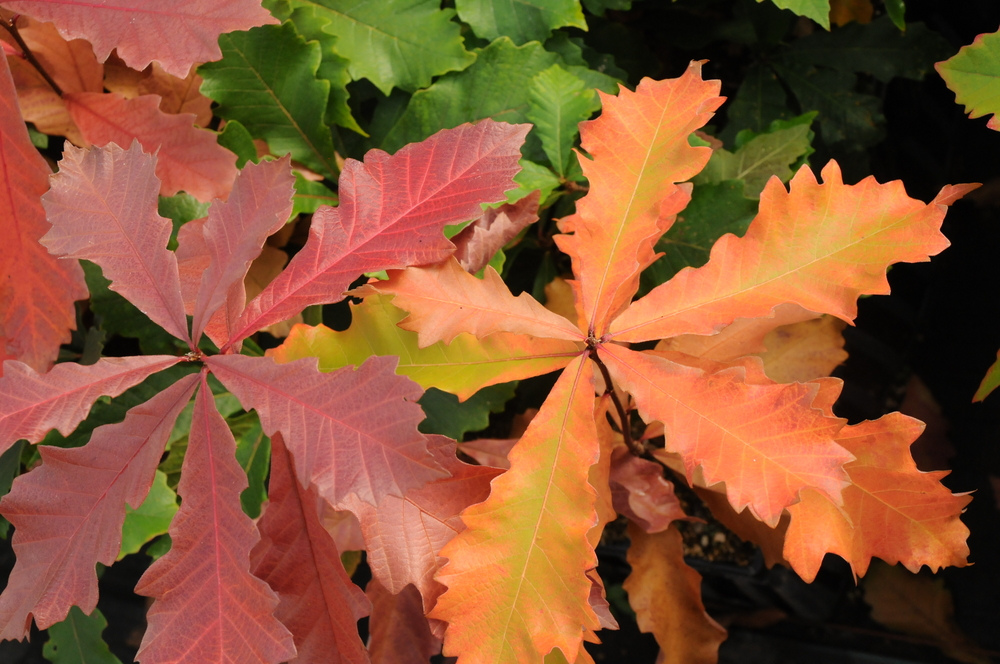
Quercus Michauxii and Planting: Expanding on the Importance and Process
In this comprehensive article, we’ll dive deeper into the world of Quercus Michauxii, also known as the Swamp Chestnut Oak. We’ll explore the unique characteristics of this remarkable tree, delve into the ecological significance of planting it, and provide a step-by-step guide on how to ensure its successful growth. So, let’s dig into the details.
Understanding Quercus Michauxii
Quercus Michauxii is a deciduous oak tree, and its distinguishing feature is its large, chestnut-like leaves. These leaves, which can grow up to ten inches in length, give this tree its common name, the Swamp Chestnut Oak. However, it’s not just the leaves that make it noteworthy. Quercus Michauxii stands tall, reaching heights of 60 to 100 feet, creating an imposing presence in any landscape.
This tree is native to the southeastern United States, thriving in states like Florida, Georgia, Alabama, and beyond. What’s fascinating about this oak species is its adaptability to a variety of soil types and climates within its native range. It is perfectly suited for wetland areas, including swamps and bottomlands, making it a vital component of these unique ecosystems.
The Significance of Planting Quercus Michauxii
Planting Quercus Michauxii offers a plethora of benefits. One of the most vital advantages is its positive impact on the environment. These trees play a crucial role in reducing water pollution. Their extensive root system acts as a natural filtration system, removing impurities and maintaining water quality in wetland areas. This is an invaluable contribution to preserving water resources and protecting aquatic life.
Furthermore, Quercus Michauxii provides habitat and food for a variety of wildlife species. This, in turn, contributes significantly to local biodiversity. The presence of these oaks can attract a wide range of creatures, from birds and insects to larger mammals. By planting Quercus Michauxii, you’re actively fostering the health and diversity of local ecosystems.
The aesthetic value of Quercus Michauxii in landscaping is also worth noting. The impressive size and striking appearance of this oak make it a sought-after choice for ornamental landscaping. Its leaves turn various shades of red and brown in the autumn, creating a breathtaking display of color. Whether in a park, garden, or even a backyard, Quercus Michauxii adds a touch of grandeur to any property.
How to Plant Quercus Michauxii
For those interested in planting Quercus Michauxii, it’s essential to follow a few key steps to ensure its successful growth:
- Selecting the Right Location: Choose a site with well-drained soil. While this species thrives in moist conditions, it does not tolerate waterlogged soil. Quercus Michauxii prefers full sun exposure but can tolerate some shade.
- Sapling Selection: When selecting saplings, opt for healthy nursery-grown ones. This is crucial for the long-term health and vitality of the tree.
- Planting Process:
- Dig a hole that is roughly twice the width of the root ball.
- Plant the tree at the same depth it was in the nursery.
- After planting, water the sapling thoroughly to help it establish its roots.
- Caring for Young Trees: After planting, it’s crucial to provide regular care for the young tree. This includes watering during dry periods, mulching to conserve moisture, and protecting the tree from pests and diseases.
Quercus Michauxii Conservation Efforts
Conservation is paramount when it comes to preserving Quercus Michauxii. Various organizations and institutions are actively involved in initiatives aimed at protecting this species. These initiatives may involve habitat preservation, scientific research, and public education.
However, individual involvement can make a significant difference. If you’re passionate about this oak species, there are several ways you can contribute to its conservation. Participate in local tree planting events to increase the population of Quercus Michauxii. Donating to conservation organizations that focus on oak species is another impactful way to support these efforts. Additionally, spreading awareness about the importance of conserving Quercus Michauxii is crucial for garnering public support.
Frequently Asked Questions (FAQs)
Q1: Can I plant Quercus Michauxii in my backyard?
A1: Yes, if your backyard has suitable soil conditions and space, you can definitely plant Quercus Michauxii. It will not only enhance your property but also contribute to the local ecosystem.
Q2: What is the best time to plant Quercus Michauxii?
A2: The best times to plant this oak species are in late fall or early spring when the tree is dormant. This minimizes stress on the young tree due to extreme weather conditions.
Q3: How can I support Quercus Michauxii conservation efforts?
A3: You can support conservation by actively participating in local tree planting events, contributing to organizations dedicated to oak conservation, and educating others about the significance of this species.
Q4: Are there any specific pests that affect Quercus Michauxii?
A4: While Quercus Michauxii is generally hardy, it can be vulnerable to pests such as oak borers. Regular inspection and appropriate pest control measures can help prevent damage to the tree.
Q5: What is the lifespan of Quercus Michauxii?
A5: Quercus Michauxii trees can live for several decades, often reaching over 100 years with proper care and maintenance.
Conclusion
In conclusion, Quercus Michauxii, the Swamp Chestnut Oak, is not just a tree; it’s a vital component of our ecosystems. Planting and conserving this species is an investment in the environment and a commitment to preserving the beauty and balance of our natural world for future generations. So, if you’ve been contemplating planting a tree or getting involved in conservation efforts, consider Quercus Michauxii and take a step toward making a lasting impact.